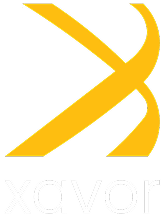
As manufacturers adopt automation to employ industry 4.0 best practices, the industry remains largely unable to unlock the greatest value out of the move towards digitization. One driving factor for dismal results is the lack of technology to gather high-quality data and garner those insights to make better data-driven decisions.
Data is the new oil. However, while 91% of companies say that data-driven decision-making is important for their growth, only 57% of companies base their business decisions on their data (Bi-survey).
Precise analytics enable managers to understand the dynamics of their business, anticipate market shifts, and manage risks. On the contrary, poor data or the lack of it make businesses susceptible to bad performance and deliver inconsistent or bad customer experiences.
Poor or delayed decision-making concerning employee safety, management and product quality can accrue costs and drive down performance. However, computer vision, with its far-reaching use cases and diverse applications, is now emerging as the keystone of strategic decision making.
The next few sections explore the diverse capabilities manufacturers can leverage with computer vision to make intelligent decisions and drive growth in business.
Manage Attendance with Analytics:
Recurring employee absence can incur heavy costs for the manufacturing industry. To compensate, manufacturers may have to hire employees on an ad hoc basis, or available employees may have to work overtime, inducing costs and compromising employee productivity.
A computer vision-based automated attendance system can effectively manage employee attendance records. Its facial recognition technology eliminates the chances of proxy attendance and ensures accurate attendance.
Moreover, manufacturers can analyze the attendance data to uncover trends related to increased absenteeism and fatigue. This allows them to make critical data-driven decisions to manage employee burnout, minimize absenteeism and boost operational efficiency.
Avoid Production Delays with Early Defect Detection:
Early defect detection can both improve product quality and reduce costs by minimizing manufacturing waste. However, manual detection of defects can be time consuming, costly, and faulty.
Through computer vision-based product monitoring and assembly line monitoring, manufacturers can effectively detect recurring defects and ensure high product quality.
Manufacturers can gather data related to individual defects at various stages of the manufacturing process. Using this data, they can identify problem areas and make necessary changes to avoid production delays.
Ensure Employee Safety:
An unsafe production facility can severely compromise employees’ productivity and directly impact a company’s ROI. Employers can save $4.00 to $6.00 for every dollar spent on a safety and health program in terms of value.
With a computer vision-based monitoring system, manufacturers can also minimize accidents and secure their production facilities. The system can detect and record the instances of spillage of hazardous materials, allowing manufacturers to take precautionary measures to avoid these accidents in future.
Similarly, through contact tracing, computer vision can help prevent the spread of infectious diseases. Manufacturers can easily separate the affected employees from the healthy ones and continue operations with no downtime.
Gather Insights to Manage Employees:
Manufacturers have to ensure product quality, meet deadlines and enhance supply chain performance without losing momentum to stay competitive. But it can only be possible if the employees stay focused at work and complete their projects on time.
Computer vision helps manufacturers to keep track of their employees’ time and whereabouts. In case of an uncompleted task, manufacturers can use these insights to communicate the required course of action to employees.
Through screen supervision, manufacturers receive employees’ performance reports. Manufacturers are then able to ensure efficient and recurring feedback loops for the workforce. This, in turn, can motivate employees to work on their weaknesses and increase productivity.
Conclusion:
Automating your industrial monitoring through computer vision enables manufacturers to streamline internal processes, interpret and monitor potential hazards, and build mechanisms for constant feedback and improvement. Making your production facility smarter can seem challenging but will ultimately be a rewarding journey and Xavor Corporation can help you manage the ins and outs of automation. With over 25 years of experience under its belt, Xavor specializes in enabling med device and life sciences manufacturers through the provision of IT, automation, and digital transformation services.
Get in touch today and level up your industrial operations with artificial intelligence.
Visit https://xavor.com/contact or email us at [email protected] to find out how.
